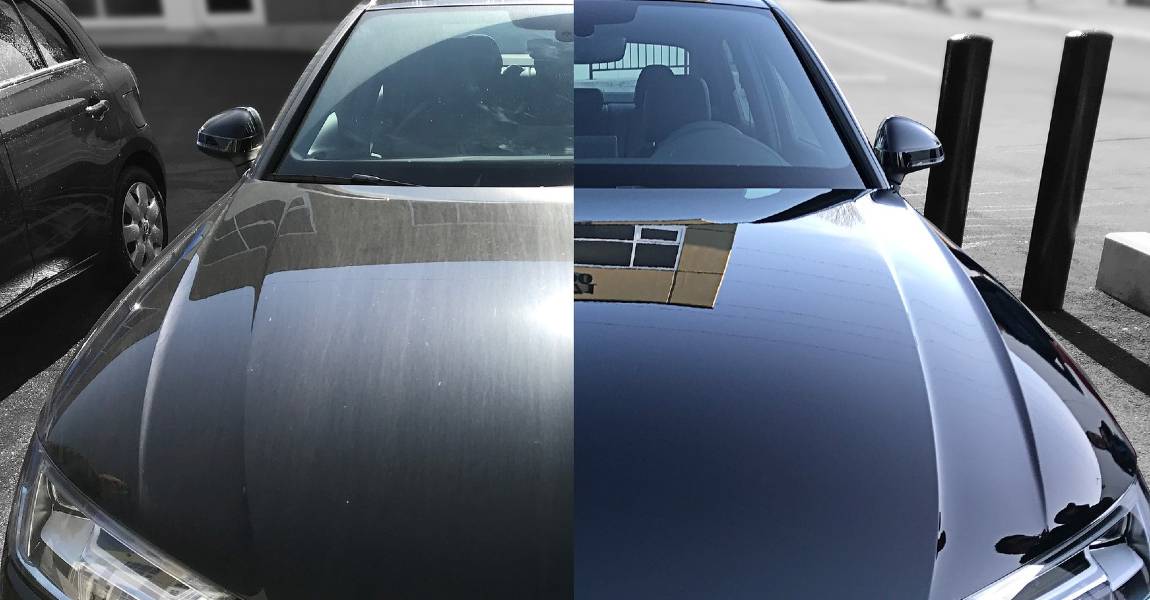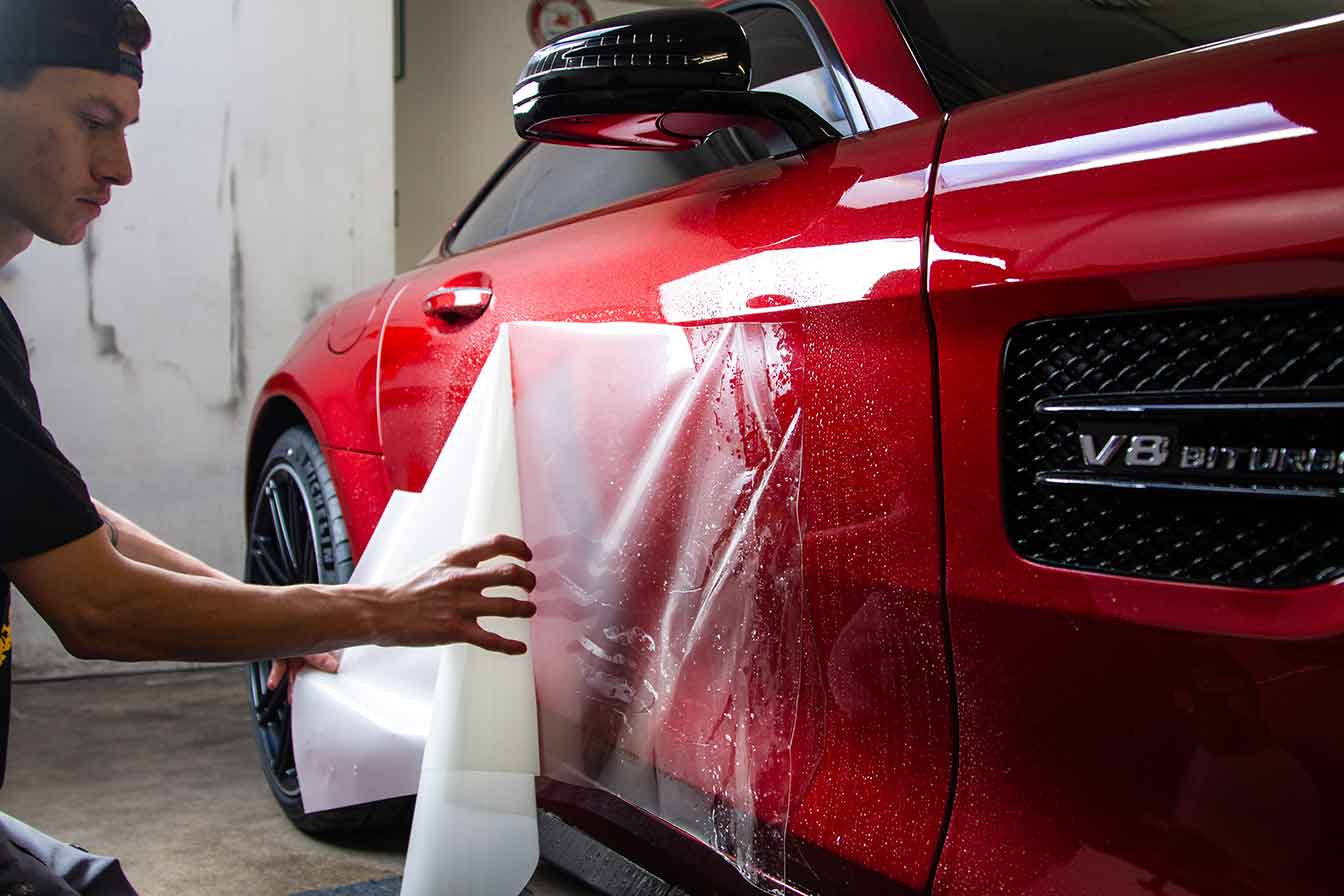The Significance of Ceramic Coating: Securing Your Auto's Outside With Precision
In an age where keeping the visual and functional honesty of your vehicle is vital, ceramic layer emerges as a critical option. With its unique bonding homes, ceramic layer offers a level of security that far exceeds standard waxing approaches.
Advantages of Ceramic Coating
When it involves maintaining an automobile's aesthetic charm, ceramic finish uses substantial benefits. This sophisticated safety layer supplies a resilient shield against environmental contaminants, including dust, crud, and harmful UV rays. By forming a semi-permanent bond with the vehicle's paint, ceramic coverings efficiently prevent oxidation and fading, ensuring that the vehicle maintains a shiny, showroom-like coating for a prolonged period. This not only boosts the automobile's visual appeal yet additionally adds to its long-lasting value.
Along with its safety high qualities, ceramic covering provides remarkable hydrophobic homes, causing water and various other liquids to bead off easily. This function streamlines the cleaning procedure, as dust and particles are less most likely to abide by the surface area, minimizing the frequency and initiative required for upkeep. The layer's resistance to chemical spots from acidic contaminants like bird droppings and tree sap is one more significant benefit, decreasing potential paint damage.
Ceramic layers also improve scrape resistance, providing a layer that can take in small abrasions and swirl marks. This feature is particularly helpful in maintaining a beautiful surface area, lowering the likelihood of visible imperfections and protecting the stability of the auto's paintwork with time.

How Ceramic Finishing Functions
Recognizing the technicians behind ceramic coating reveals its effectiveness as a safety option for lorries. Ceramic coatings are essentially liquid polymer applications that chemically bond with a cars and truck's manufacturing facility paint, developing a protective layer. This layer functions as a barrier against environmental contaminants such as grime, ultraviolet, and dirt rays, which can weaken a car's exterior over time. The key part in ceramic layer is silicon dioxide (SiO2), which stems from quartz crystals and is recognized for its phenomenal solidity and resilience.
Application of ceramic finish involves a thorough procedure. This guard improves the vehicle's gloss and hydrophobic buildings, facilitating easier cleaning by causing water and pollutants to grain and slide off easily.
Furthermore, the layer's molecular structure offers resistance to small scrapes and chemical stains. Unlike waxes or sealants that sit on top of the paint, ceramic finishes incorporate with the surface, providing resilient defense. This integration is fundamental to its efficiency, making certain the lorry's finish remains excellent for several years.
Contrasting Ceramic Coating to Alternatives
In the realm of automobile security, ceramic finishing stands as a powerful choice when compared to conventional alternatives such as waxes and sealants. While waxes offer a temporary glossy coating, commonly lasting just a few weeks to months, ceramic finishings offer a longer-lasting service, frequently enduring for years. This resilience is credited to the chemical bonding that takes place when ceramic layers are used, developing a solid layer that is immune to ecological risks.
Contrastingly, sealers, although even more durable than waxes, still fall brief of the robust defense supplied by ceramic finishings. Sealants can usually last for as much as a year, offering an artificial guard against particular aspects. They lack the remarkable hydrophobic homes and UV protection that ceramic finishes deliver.
Furthermore, ceramic finishes supply enhanced scratch resistance, which neither waxes nor sealants can efficiently match. In recap, while typical waxes and sealers supply basic protection, ceramic coverings provide a thorough, lasting remedy that significantly preserves the vehicle and enhances's exterior finish.
Application Refine Clarified
Using ceramic layer to a vehicle calls for a thorough procedure to make certain optimum outcomes and longevity. The first action entails completely cleaning up the auto's surface area to eliminate dirt, grease, and previous waxes. This is crucial for ensuring the covering adheres effectively. A pH-neutral hair shampoo and a clay bar therapy are commonly utilized to achieve a pristine surface. Once cleaned, the vehicle is dried and polished to get rid of any type of flaws, as any type of existing scrapes or swirls can end up being more obvious after the finish is applied.
Adhering to surface prep work, the application of the ceramic covering starts. The covering is typically applied in a climate-controlled setting to avoid dirt particles from choosing the freshly cleaned up surface area. Using an applicator pad, the ceramic finish is used in small areas to make certain even protection. It is important to comply with the supplier's guidelines relating to the ideal curing time and application thickness.
After application, the coating needs a certain healing duration, during which the Homepage car ought to be shielded from water and impurities. This curing process can vary depending on the product however normally varies from 24 to two days. Inevitably, this thorough procedure is pivotal in achieving a glossy and durable surface.
Upkeep Tips for Durability
To preserve the durability of a ceramic finish, adherence to a self-displined upkeep regimen is necessary. Normal cleaning is extremely important; make use of a pH-neutral car shampoo and soft microfiber mitts to avoid abrasions. Avoid automatic car washes, as their rough brushes can jeopardize the finishing's stability. Instead, select a hand clean to make certain thorough yet mild cleansing.
Post-wash, drying the vehicle with a tidy microfiber towel protects against water places that may degrade the layer with time. Furthermore, apply a ceramic layer booster every few months. These boosters reinforce the hydrophobic residential or commercial properties and enhance the finish's protective capacities, ensuring it continues to be efficient against pollutants.
Remember that parking areas play an important duty in maintenance. ceramic coating. Whenever feasible, park in shaded areas to decrease UV exposure, which can progressively weaken the layer. For long-lasting storage space, consider making use of a vehicle cover for included defense against ecological aspects
Verdict
Finally, ceramic layer acts as a vital protective layer for automobile outsides, why not look here offering resilient protection against environmental aspects such as dust, uv, and crud rays. By forming a semi-permanent bond with the paint, it improves visual appeal while protecting the car's value. Its hydrophobic properties help with much easier upkeep, distinguishing it from alternate safety approaches. Recognizing the application procedure and sticking to upkeep recommendations are vital for making the most of the durability and efficiency of ceramic finish.
When it comes to preserving an automobile's aesthetic appeal, ceramic coating supplies considerable advantages. By forming a semi-permanent bond with the lorry's paint, ceramic layers properly stop oxidation and fading, guaranteeing that the vehicle keeps a shiny, showroom-like finish for an extensive period. Ceramic coverings are basically liquid polymer applications that chemically bond with a vehicle's manufacturing facility paint, producing a protective layer. In recap, while conventional waxes and sealers use basic defense, ceramic finishings present a detailed, long-term remedy that considerably preserves the lorry and improves's outside finish.
